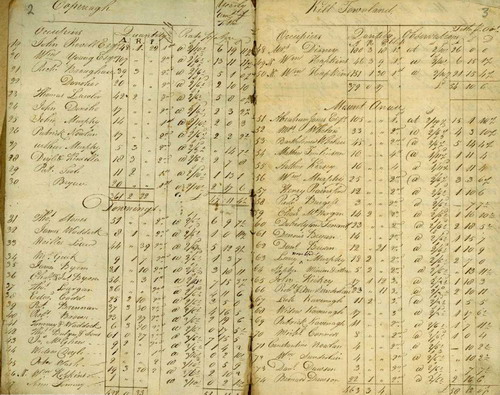Lurgan Tithe Applotments 1828 - 1834





The Composition Act of 1823 specified that tithes due to the Established Church, the Church of Ireland, which had hitherto been payable in kind, should now be paid in money. As a result, it was necessary to carry out a valuation of the entire country, civil parish by civil parish, to determine how much would be payable by each landholder. This was done over the ensuing 15 years, up to the abolition of tithes in 1838.
Not surprisingly, tithes were fiercely resented by those who were not members of the Church of Ireland, and all the more because the tax was not payable on all land; the exemptions produced spectacular inequalities. In Munster, for instance, tithes were payable on potato patches, but not on grassland, with the result that the poorest had to pay most.
The exemptions also mean that the Tithe Books are not comprehensive. Apart from the fact that they omit entirely anyone not in occupation of land, certain categories of land, varying from area to area, are simply passed over in silence. They are not a full list of householders. Nonetheless, they do constitute the only country-wide survey for the period, and are valuable precisely because the heaviest burden of tithes fell on the poorest, for whom few other records survive.
From a genealogical point of view, the information recorded in the Tithe Books is quite basic, consisting typically of townland name, landholder's name, area of land, and tithes payable, in some cases only a few of these were recorded. In addition, many Books also record the landlord's name and an assessment of the economic productivity of the land; the tax was based on the average price of wheat and oats over the seven years up to 1823, and was levied at a different rate depending on the quality of the land.
The usefulness of the Tithe Books can vary enormously, depending on the nature of the research. Since only a name is given, with no indication of family relationships, any conclusions drawn are inevitably somewhat speculative. However, for parishes where registers do not begin until after 1850, they are often the only early records surviving. They can provide valuable circumstantial evidence, especially where a holding passed from father to son in the period between the Tithe survey and Griffith's Valuation. The surnames in the Books have been roughly indexed, in the National Library Index of Surnames, described more fully in Griffith's Valuation.
The original Tithe Books for the 26 counties of the Republic of Ireland are available in the National Archives. Those for the six counties of Northern Ireland were transferred to the Public Record Office of Northern Ireland in 1924. Photostat copies of these are available at the National Archives, and microfilm copies in the National Library.
We are currently building a database of names in all of the records shown here, but as you can probably imagine, this is a mammoth task and we are adding new names daily. You can search through the names available in the search engine below. If you have any records for the Lurgan area that you would like us to publish here, please contact us via the link below.
We make this information freely available to genealogists and Family Historians, but at no time may this information be used on a pay site or sold for profit. Our thanks to Pat Connors at connorsgenealogy.com for the use of these records.
Click on an area on the right to see the records, or type a surname in the search box below.


|

